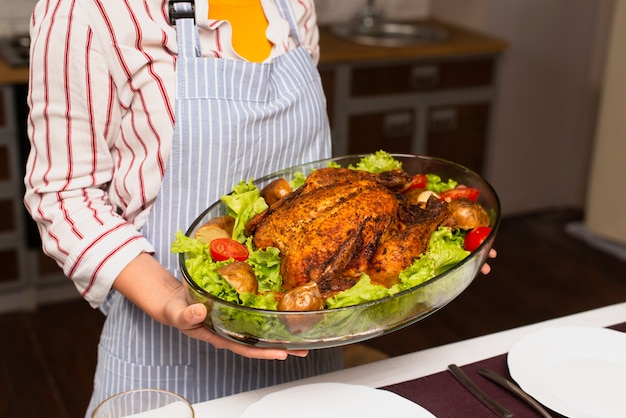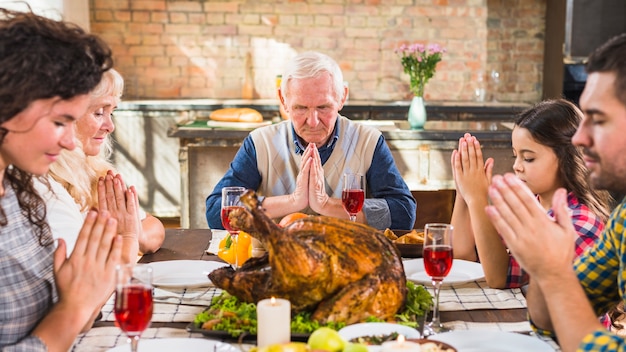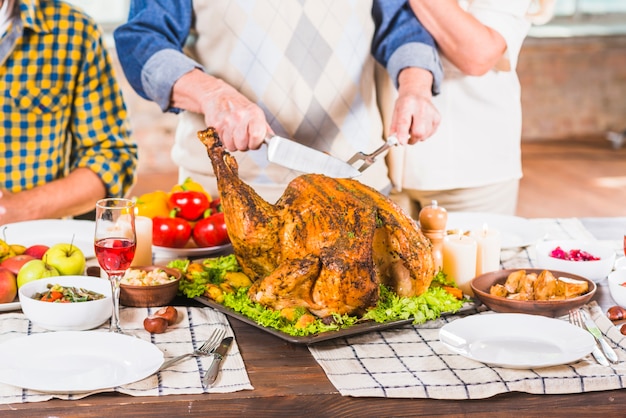You've got this magnificent 18lb turkey, a centerpiece for your festive feast, and you're wondering: "How long in the world will it take to cook this behemoth?" Don't worry, you're not alone. I've been there, staring at a similar giant bird, feeling a bit overwhelmed and uncertain about whether I could pull it off. But believe me, with a little bit of knowledge and a dash of confidence, you can absolutely conquer this culinary challenge.
The good news is that cooking a turkey, even a massive one, is not rocket science. It just requires a bit of planning, some basic know-how, and the right tools. So grab a cup of tea, get comfy, and let's embark on this journey together, tackling the turkey roasting adventure step-by-step.
Part 1: The Big Picture

1.1. Weight Matters
The first and most important factor in determining turkey cooking time is its weight. That hefty 18lb bird will take a significantly longer time to cook through compared to a smaller one. It's just simple logic, really. More meat means more time to reach that perfect internal temperature.
1.2. Stuffing: A Variable to Consider
Another crucial element that influences cooking time is whether you're stuffing your turkey. If you are, you'll need to add extra time to ensure the stuffing cooks through thoroughly. This is where things get a bit more complex because stuffing can be a bit of a fickle friend in the kitchen. It needs to reach a safe internal temperature of 165°F (74°C) to be safe to eat, just like the turkey itself.
Part 2: The Golden Rule of Turkey Cooking

2.1. The Magic 15 Minutes per Pound
Now, here's the golden rule that every turkey cook needs to know: allow approximately 15 minutes per pound of turkey. So, for that 18lb beauty, you're looking at a total cooking time of about 270 minutes, which translates to 4.5 hours. This is a good starting point, but there are a few other factors to consider.
2.2. Temperature: The Crucial Factor
Cooking time is not the only factor. The internal temperature of the turkey is the ultimate indicator of whether it's cooked through and safe to eat. This is where your trusty meat thermometer becomes your best friend. You want to ensure the thickest part of the thigh (without touching the bone) reaches 165°F (74°C). This is the sweet spot that guarantees the turkey is cooked to perfection.
Part 3: The Great Debate: To Stuff or Not to Stuff?

3.1. The stuffed turkey: A Longer Cook
If you're going the stuffed route, be prepared for a longer cooking time. The general rule of thumb is to add 30 minutes to your total cooking time to account for the stuffing needing to reach that safe internal temperature. So, for an 18lb stuffed turkey, you're looking at about 5 hours of cooking time.
3.2. The unstuffed turkey: A More Straightforward Process
If you're not stuffing your turkey, your cooking time remains at 4.5 hours. Personally, I find stuffing the turkey after it's cooked to be a much safer and easier option. This way, you can focus on cooking the stuffing separately, ensuring it's cooked through without impacting the turkey's cooking time. Plus, you have more control over the stuffing's texture and flavor this way.
Part 4: The Oven's Role in the Turkey Saga
4.1. Oven Temperatures and Their Impact on Turkey
The temperature of your oven can drastically affect how quickly your turkey cooks and the outcome of your roast. A higher oven temperature will cook the turkey faster but can lead to dryness. A lower oven temperature will take longer but helps keep the turkey moist and flavorful. Personally, I prefer to cook my turkey at 325°F (163°C) for a happy medium, striking a balance between cooking time and preserving moisture.
Part 5: Brining: A Magical Transformation
5.1. The Science Behind Brining: A Game-Changer for Turkey
Brining is a simple but powerful technique that involves soaking the turkey in a salty solution before roasting. This process works wonders in keeping the turkey incredibly moist, juicy, and bursting with flavor. It's truly a game-changer for turkey lovers. The salt in the brine draws moisture out of the turkey and then back in, resulting in a more tender and flavorful bird.
5.2. The Impact of Brining on Cooking Time
While brining is fantastic for turkey, it's important to note that it can slightly increase the cooking time. I recommend adding an extra 30 minutes to your total cooking time if you've decided to embrace the wonderful world of brining. Trust me, the added moisture and flavor are worth the extra few minutes.
Part 6: Getting Ready for the Roast
6.1. The Importance of Pre-heating Your Oven
Always pre-heat your oven to the desired temperature before you put the turkey in. This is a crucial step that ensures the turkey cooks evenly, preventing uneven cooking and raw spots. Your turkey deserves a warm and inviting oven, not a cold shock.
6.2. Patting Dry for a crispy skin
Before you slide your turkey into the oven, give it a good pat down with paper towels to remove any excess moisture. This step helps the skin to crisp up beautifully, achieving that gloriously golden brown color and delightful crunch. A crispy skin is the hallmark of a well-cooked turkey, adding another dimension of flavor and texture to your feast.
Part 7: Roasting the Turkey: The Big Moment
7.1. The Art of Roasting: A Watchful Eye
Now comes the moment you've been waiting for: the turkey goes into the oven. But don't think this is the time to relax! You need to keep a watchful eye on your turkey, ensuring it roasts evenly and beautifully. The first hour or so is particularly crucial. You want to make sure the turkey is browning properly, developing that gorgeous golden crust. After that initial hour, you'll want to keep an eye on the turkey to ensure it's not drying out.
7.2. The Magic of a Roasting Rack
I always recommend using a roasting rack when cooking your turkey. This simple tool allows air to circulate around the turkey, promoting even cooking and preventing the bottom from becoming soggy. It also allows the skin to crisp up perfectly, creating that irresistible golden brown finish we all crave.
Part 8: Checking the Temperature: The Proof is in the Pudding
8.1. The Meat Thermometer: Your Trusted Ally
As your turkey roasts, you need to check its internal temperature to ensure it's cooked through and safe to eat. This is where your trusty meat thermometer comes in. Insert it into the thickest part of the thigh, making sure not to touch the bone. It should reach 165°F (74°C) for a perfectly cooked turkey.
8.2. Letting the Turkey Rest: A Moment of Patience
Once your turkey reaches that perfect 165°F (74°C), don't rush to carve it immediately. Let it rest for at least 20 minutes before carving. This allows the juices to redistribute throughout the meat, resulting in a more moist and flavorful turkey. A little patience goes a long way in achieving a delicious outcome.
Part 9: FAQs: Solving Turkey Mysteries
9.1. How do I know if my turkey is done?
The most reliable way to know if your turkey is done is by using a meat thermometer. Insert it into the thickest part of the thigh, without touching the bone. It should register 165°F (74°C). This is the ultimate indicator that your turkey is cooked through and safe to eat.
9.2. What if my turkey isn't cooked all the way through?
Don't panic if your turkey isn't cooked through. Simply pop it back into the oven for a bit longer, checking the temperature again after 15-20 minutes. It's always better to be safe than sorry when it comes to turkey cooking.
9.3. What if my turkey is overcooked?
Unfortunately, there's not much you can do if you've overcooked your turkey. It will be a bit drier than you'd like, but it's still safe to eat. Try to use a really sharp knife when carving it to minimize the amount of meat you lose.
9.4. How do I carve a turkey?
carving a turkey can seem intimidating, but it's actually quite straightforward. Start by removing the legs and thighs. Then, carve the breast meat in slices. Use a carving fork to hold the turkey in place as you carve, ensuring a steady hand and precise cuts.
9.5. What do I do with the leftover turkey?
Leftover turkey is a culinary treasure! It's perfect for sandwiches, salads, soups, and casseroles. You can also freeze it for later use. Just wrap it tightly in plastic wrap or freezer paper before putting it in the freezer.
So there you have it, a comprehensive guide to cooking an 18lb turkey, from pre-heating to carving. With a bit of planning, a dash of confidence, and a touch of patience, you'll be serving up a delicious turkey feast that will leave everyone impressed. Happy roasting!
Everyone is watching

How to Cook Frozen Lobster Tails Perfectly: A Step-by-Step Guide
RecipesLobster. Just the word conjures up images of lavish meals, special occasions, and a taste of luxury. But let's...

Pigs in a Blanket Cooking Time: How Long to Bake for Perfect Results
RecipesAh, pigs in a blanket. Just the name conjures up images of those delightful little parcels of crispy pastry en...

Pork Fillet Cooking Time: How Long to Cook It Perfectly
RecipesPork fillet, or tenderloin as it's sometimes called, is a real favourite in our house. It's so versatile, and...

The Ultimate Guide to Tender, Juicy Pulled Pork
RecipesRight, let's talk pulled pork. It's one of those dishes that just screams "comfort food," doesn't it? I mean...

The Ultimate Guide to Cooking Sweet Potatoes: From Roasting to Mashing
RecipesSweet potatoes. Just the name conjures up images of warm, comforting dishes, bursts of vibrant color, and a to...
